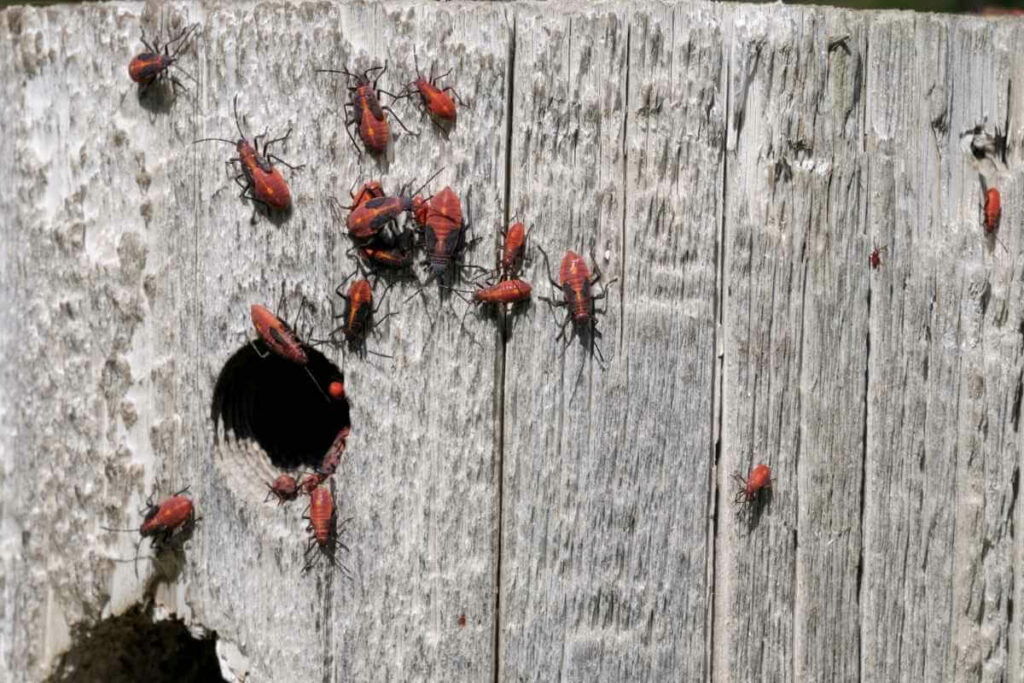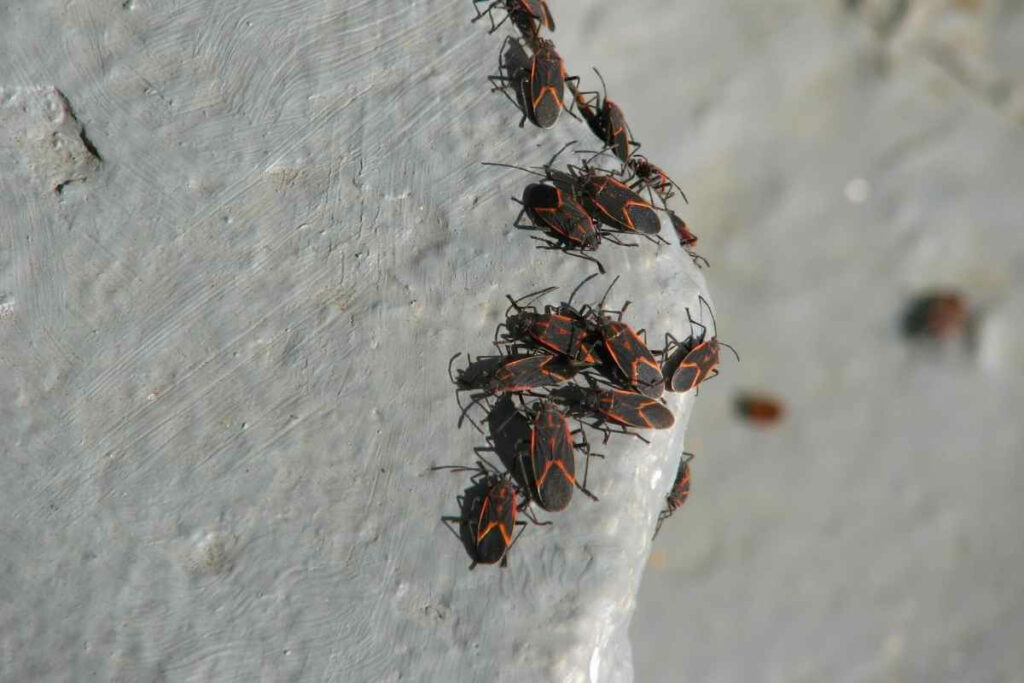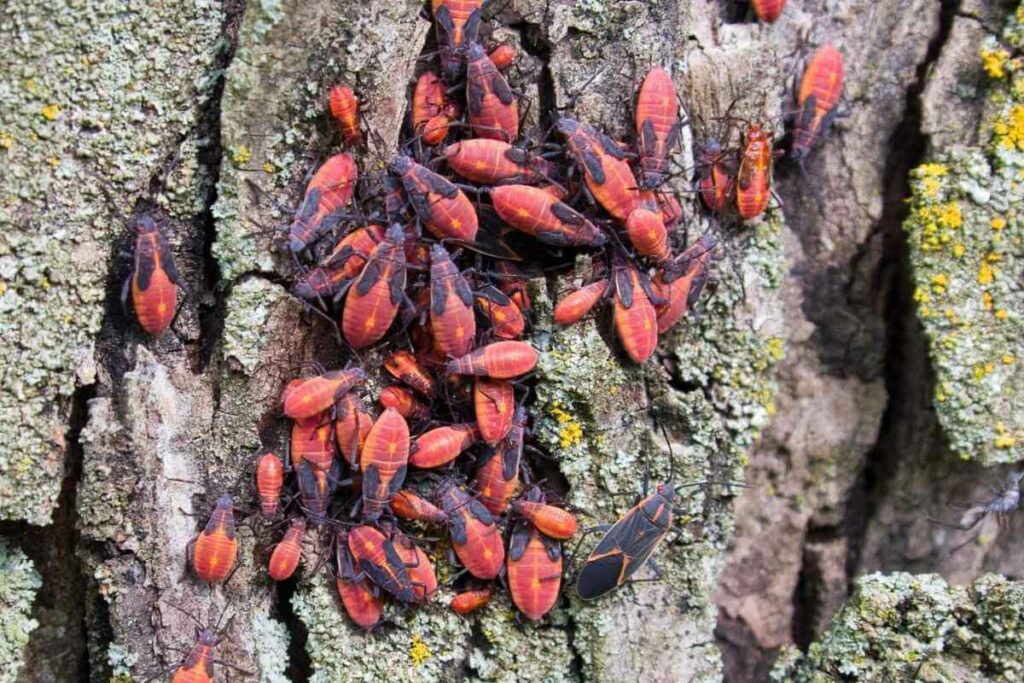A boxelder bug infestation can be a real nuisance!
While these bugs can be a hassle to have around your home and property, they do not bite or harm humans. These residents of the boxelder tree are far more interested in eating the seeds and leaves of the boxelder, as well as common trees like Maple or Ash.
It is their habitat and behavior that brings them into contact with humans as they are a feature of many suburban gardens in North America.
If you have suffered a Fall home invasion from boxelder bugs and want to know how you can get rid of them, this article will explain everything you need to know about the pest and equip you with some effective strategies for evicting them from your property once and for all!
So, Just What Are These Boxelder Bugs?
Boisea tivittata also known as the boxelder bug is a native North American bug that makes it home in boxelder, ash and maple trees.

If you are in the Eastern US through to Nevada boxelder, bugs are likely in your area.
It is a true bug, defined by the piercing and sucking mouthparts it shares with over 80,000 related species.
What Do Boxelder Bugs Look Like?
If you have suffered an infestation before, they will certainly be easy to recognize, but without them congregating in large numbers they are easy to miss.
Adult boxelder bugs are just over half an inch, with a flattened body and a rather mundane, dark coloration with red-orange wing veins and abdominal markings.
The overlapping of the mature boxelder bug’s wings produces an “X” pattern on its back. The legs and antennae of the box elder are black.
Have You Noticed: Its eggs are yellow and gradually turn red as their nymphs develop. The wingless nymphs of this species are a little more noticeable with a red coloration.
Boxelder Bugs Are Tree-dwelling Residents That Are Most Active in Late Summer Through Fall
The first appearance of the boxelder bug is in the late spring when they emerge from hibernation, just in time for the developing leaves of the boxelder trees.
From May onwards they will colonize host trees, taking advantage of the growing season to feed and breed.
Female boxelder bugs will lay their eggs in the crevices of tree bark, with nymphs hatching within two weeks of the eggs being laid.
The nymphs immediately start feeding on the foliage of the boxelder tree by sucking sap using specially adapted piercing mouthparts.

They continually feed in this manner until they mature.
A long spring and summer season may see two generations of this bug be produced in a single year with adults hibernating in the late fall.
Do Boxelder Bugs Bite People?
Boxelder bugs are not known to bite people. These insects are not dangerous pests, but still, get them under control. You don’t have to worry about them going after people’s skin.
Do Boxelder Bugs Bite Pets?
Boxelder bugs don’t bite pets. The boxelder bug is harmless to your dog and cat.
What Do Boxelder Bugs Eat?
Boxelder bugs primarily suck sap from boxelder trees and maples, but they can feed on other plants too. Aside from boxelder seed pods and maple seeds they feed on ash and maple sap and will also target raspberries and strawberries if their regular food sources are unavailable.
Their feeding behaviors do not cause significant plant damage, so they are not classified as plant pests.
Why Are Boxelder Bugs a Problem?
Though these bugs are harmless, they can cause problems for humans, due to their swarming behaviors and tendency to enter properties, seeking warmth as the fall progresses.
They love warm areas and will seek buildings with sunny southern or western exposure.
You may find them sunning themselves on the wall of your home and if they can gain entry they will enter and congregate in your home.
For some homeowners, this is an annual event as they actively search out a warm crevice to hibernate in!
If they can get away with it, boxelder bugs will look for cracks and crevices in your:
- masonry
- walls
- doorframes
- or beneath windowsills
The large numbers of swarming bugs can be a nasty surprise, but they cannot bite, and they do not cause disease.
At Most: The pests can cause staining of surfaces or release a pungent defensive odor if they are crushed.
What Can I Do about a Boxelder Bug Infestation?
Some property owners have to tackle boxelder bug infestations year after year, as they search for a winter hibernation spot.

The options for tackling this nuisance include the physical removal of the insects from your home and preventative strategies to stop them from congregating and gaining entry to your property.
Here’s what you can do:
- Remove boxelder bugs wherever you find them: the presence of large numbers of boxelder bugs on the side of your building is often the first sign of an imminent home invasion. Use a broom to brush them away or a leaf vac to suck them up; if boxelder bugs turn up inside your home, remove them. Swarms may have to be sucked up with a vacuum cleaner and thrown in the trash.
- Wash or steam boxelder bugs away: hose down or steam swarms on your walls to kill them.
- Consider a pesticide spray: targeted pesticide use may be beneficial for preventing large populations of boxelder bugs from gathering.
- Prevent boxelder bugs from entering your property: don’t allow the boxelder bugs to gain entry to your home! Block vents, screens and cracks and gaps in window frames and seals. Clear your garden of boxelder bug hiding places like leaf litter or clutter that is near to your home.
- Remove boxelder trees: If you have a boxelder tree on your property and are suffering recurrent infestations with these pests, a last resort may be to remove the boxelder tree altogether.
Boxelder Bugs Round Up
The sight of swarming boxelder bugs is a classic sign of fall, but if you don’t want to have these little bugs overrunning your home, take prompt action before they can get inside.
Also Read
- Are Red Spider Mites Harmful to Humans?
- How to Get Rid of Worms In Potted Plants
- Can Spider Mites Live on Humans? Do They Bite?
